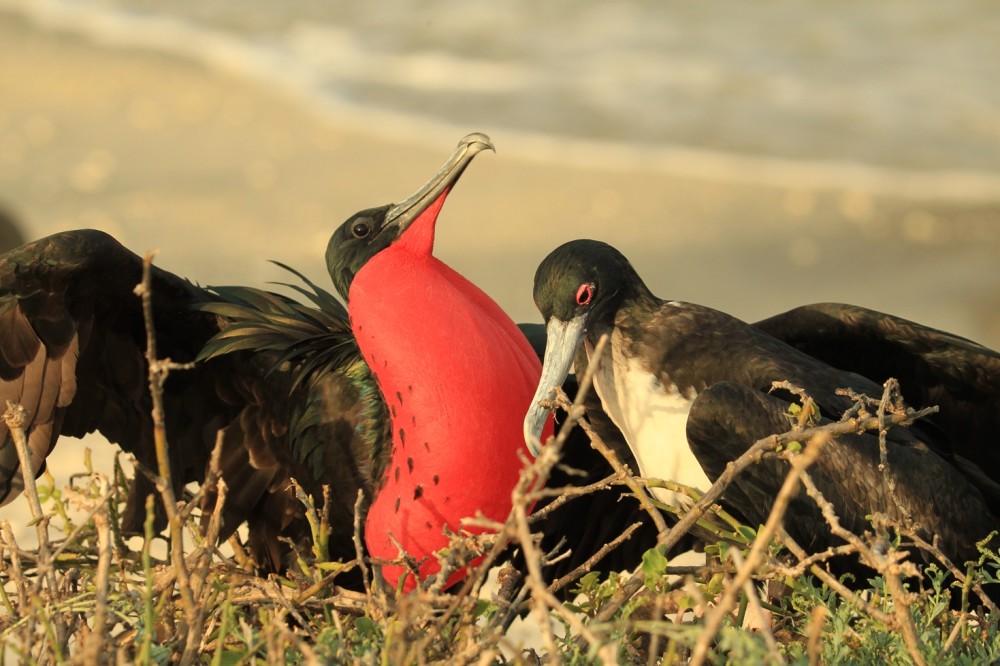
Frigatebirds are both Great and Magnificent
There are five species of frigatebird found across the world in all sub-tropical and tropical oceans.
The frigatebird’s distinctive shape, a strong silhouette in the shape of a ‘W’ allows them to soar with minimal effort; flying without flapping their wings for hours and even days at a time upon the warm, equatorial air currents and cumulus clouds.

© Philip Ladmore
The Galapagos is home to two species of frigatebird: the great frigatebird and the magnificent frigatebird. Similar in size, shape and appearance, the long, smooth shoulder feathers of the frigatebird are the most noticeable difference between the two. The subtle difference of colour of the sheen on the plumage on their backs distinguishes the great frigatebird from the magnificent; the great has a green sheen whilst the magnificent has a purple iridescence in the sunlight.

© Edward Bent
The magnificent frigatebird is the larger of the two with a wingspan measuring up to 114cm in length, compared to the great frigatebird’s wingspan of up to 105cm.
The frigatebird’s most unusual trait is displayed by the males. During the breeding season the males regularly inflate the thin, red, gular sac on their throats with air. These fleshy, red balloons are used to show off to and attract females during the mating season. The display of courtship for the frigatebirds is to sit in groups with wings spread, sacs inflated and heads tilted back. Clattering their bills, shaking their heads and quivering their wings they call to females flying by in order to win a mate. These birds exhibit sexual dimorphism, with the female being larger than the male.

Male and female great frigatebird © Robert Fuller
Most of the frigatebird’s day is spent hunting for food, consisting of mainly squid, fish, jellyfish and crabs, as well as stealing fish from other bird’s mouths. Some females have even been recorded eating other seabird chicks straight from the nest.
Both birds are listed as Least Concern on the IUCN Red List, however, it is still important to protect the habitats where they hunt and nest to ensure these species will still be present in Galapagos for future generations to enjoy.

